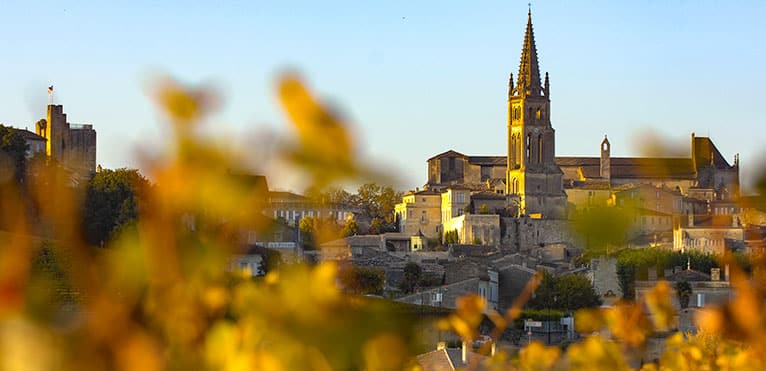
Contents
Just the mention of the name Saint-Émilion-Grand-Cru conjures up a feeling of prestige and excellence. Indeed, it is these mythical wines that have given the Saint-Émilion region its worldwide reputation. Nevertheless, it is worth remembering that within the geographical area where Saint-Émilion wines are produced, the Appellation Saint-Émilion-Grand-Cru designates Saint-Émilion wines that benefit from the special recognition of Grand Cru Classé, while the AOC Saint-Émilion is a title of geographical recognition.
Saint-Émilion-Grand-Cru, a history of excellence
This vineyard on Bordeaux’s right bank has been cultivated since Roman times, but it was the clerics who greatly contributed to the development of viticulture as we know it today.
Expansion and recognition of Saint-Émilion wines followed in the Middle Ages, thanks in particular to the marriage of Eleanor of Aquitaine to Henry Plantagenet, which greatly boosted trade between Bordeaux and London.
Successive crises linked to vine diseases such as phylloxera then hit the vineyards, leading to the formation of the second Bordeaux winegrowers’ union (after that of Lalande-de-Pomerol) in 1884. In 1890, another syndicate grouped together 7 communes that had been part of the former jurisdiction of Saint-Émilion, and claimed their right to bear this prestigious name. In 1914, the two unions merged, legitimizing the use of the name Saint-Émilion for the entire wine-growing area. And in 1936, Saint-Émilion was recognized as an AOC. Then, in 1984, the appellation was split in two, with Saint-Émilion and Saint-Émilion-Grand-Cru.
Since 1955, Saint-Émilion wines have been classified according to their best growths. It is revised every 10 years, and the latest classification defines 18 Premiers Grands Crus Classés, and 64 Grands Crus Classés. These include Château Cheval Blanc, Angélus, Ausone, Pavie and La Gaffelière.
Saint-Émilion-Grand-Cru has special characteristics and very strict specifications.
The Saint-Émilion-Grand-Cru appellation is located 35 kilometers north of Bordeaux on the right bank of the Gironde, between Pomerol and Libourne, and covers 9 communes. The land dedicated to Saint-Émilion Grands Crus represents 3,500 hectares.
The soils here are quite varied, with asteriated limestone 10 to 15 meters thick at the top of the valleys. On the slopes, we find green clay, sands and molasses. Finally, in the south of the appellation, the land is made up of sandy and gravelly terraces. The diversity of these soils is reflected in the wines, which sometimes show singular aspects, even if all Saint-Émilion Grands Crus have a very distinctive grain.
The winemaking conditions for Saint-Émilion Grands Crus are much stricter than those for Saint-Émilion in general. The maximum yield per hectare is 40 hectolitres, and barrel ageing must last at least 12 months. The wines are also all bottled on the estate.
The art of tasting a Saint-Émilion-Grand-Cru
Saint-Émilion wines are mainly made with Merlot, which accounts for around 60% of the grape varieties, followed by Cabernet Franc (30%) and Cabernet Sauvignon (10%). Other grape varieties are also present in the appellation, but represent only a tiny minority of the total.
AOC Saint-Émilion-Grand-Cru wines are generally robust, with a lovely, clean attack, while their substance is powerful and remarkable. They can be recognized by their deep ruby-red color with purplish highlights, the hallmark of Bordeaux wines. Finally, the nose is powerful, revealing rather fresh red fruit aromas, followed by delicate notes of spice, wood and roasting.
These wines gain in potential as they mature, softening with age and leaving notes of truffle and undergrowth on the palate, which express themselves on a very long finish. We therefore recommend keeping these wines for between 20 and 30 years. And for the most exceptional vintages, 50 years of ageing would not be incoherent, and on the contrary demonstrate their incredible potential.
Combine terroir and quality products to enjoy a Saint-Émilion-Grand-Cru
The character of Saint-Émilion-Grands-Crus wines and their distinctive grain tend to go best with refined, high-quality dishes. Fine cuts of red meat, lamb or mushrooms will bring out the best in you. They’re the perfect accompaniment to a pan-fried Bordeaux cep with truffle, fillet of beef with foie gras, or roast partridge with grapes, for example. To get the best out of it, we recommend serving at 16°C and decanting.
For a great vintage of Saint-Émilion-Grand-Cru, think 2005
The AOC has distinguished itself over the years through numerous vintages. In particular, the 1982, 1990 and 2005 vintages have been classified as millennium vintages. The 1989 and 2009 vintages also stood out as vintages of the century. Finally, between exceptional vintages and great vintages, 1988, 2000, 2004, 2006, 2008 and 2010 are also very fine years.
Châteaux classés Saint-Émilion-Grand-Cru, all Châteaux of excellence
Château Fonroque
In 2008, Château Fonroque was awarded the Biodynamic Agriculture label for the responsible cultivation of all its land. Since 2002, however, the Château has been working to switch part of its vineyard to biodynamic agriculture. The Château has belonged to the Moueix family since 1931, and since the 1980s they have been particularly committed to modernizing the vineyard. Today, it covers 22 hectares in the Saint-Émilion-Grand-Cru appellation.
Château La Gaffelière
Still ranked Premier Grand Cru Classé B in the 2012 Saint-Emilion wine rankings, this Saint Emilion Grand Cru estate is proof of the excellence and history of the appellation’s wines. Indeed, it shares a common history with the Malet-Roquefort family, who have owned it since the 16th century. This makes them the oldest family in Saint-Émilion. She helped ensure the prestige of this vineyard, favorably situated on a south-facing slope, while modernizing it.